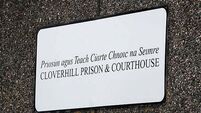We go behind the scenes at Met Éireann

As we walk out from the NASA-like peculiarity that is the Met Éireann headquarters in Glasnevin in Dublin, we discover that it has started to rain. There are four of us. Myself, my photographer colleague, Moya, and two weather forecasters, Joan Blackburn and Gerald Fleming.
“Is it raining?” I blurt out as we head out into the evening.











